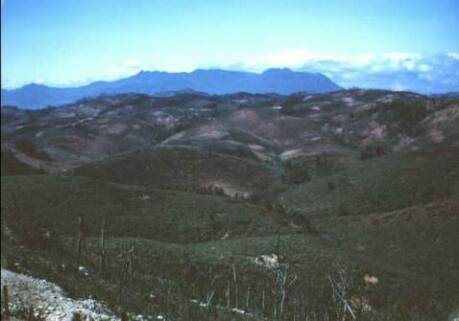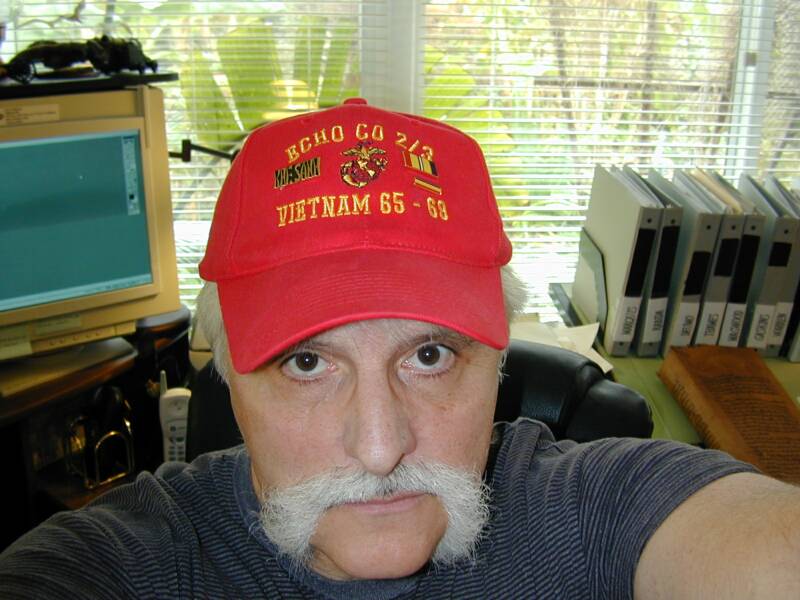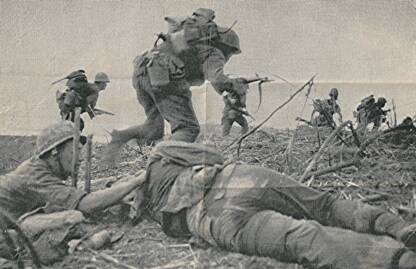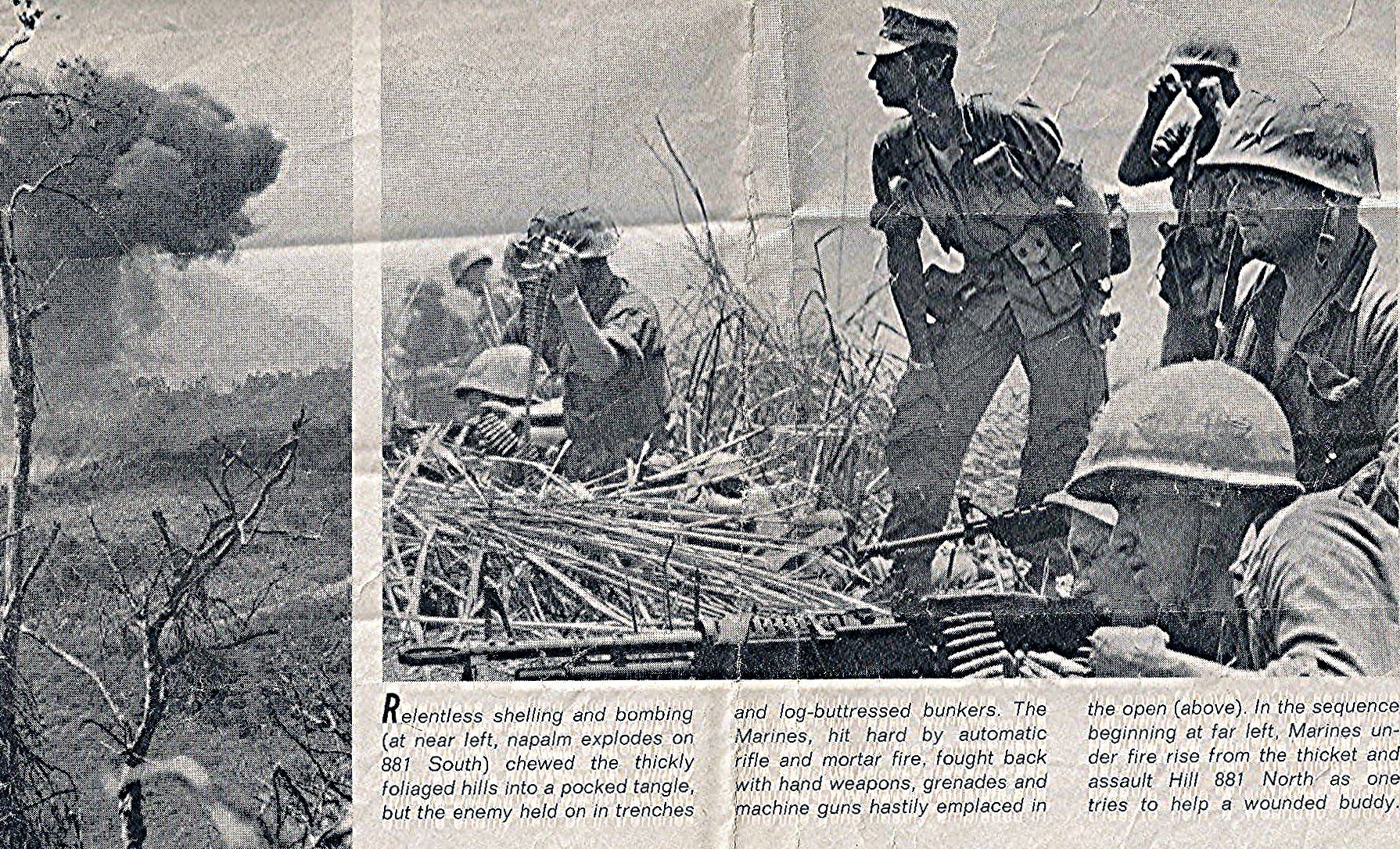
This story is dedicated to all the Marines organic or attached, living or deceased who served with Echo Company, 2nd Battalion, 3rd Marines during April and May 1967, and especially to (then) 2nd Lt. Frank "Ike" Izenour, Jr., Platoon Commander, 1st Platoon, and SSgt. Robert Morningstar, Platoon Sergeant, 2nd Platoon.
Frank was a hard-charging Second Lieutenant fresh out of The Basic School, a fast learner, a fine person, an excellent Marine officer, and a helluva good friend of mine.
Morningstar was a shotgun loving, beer drinking, Staff Non-Commissioned Officer who wanted everyone to think he was somebody. He was. He was a loyal, dedicated Marine with a heart as big as a barn door who would do just about anything for anybody. He would give you the shirt off his own back, whether you needed it or not. You only had to ask for it. I could and did depend upon him a lot. He was my platoon sergeant.
PREFACE
The following is a true story. No names, places, times or dates have been changed. This is one man's story of the Hill Fights near Khe Sanh in northwest Vietnam. During the period of 26 April through 11 May 1967, there were many actions and events untold and many acts of valor unnoticed. Every man there has or had his own interpretations as to what took place his own story to tell. This one is mine. In it, I have tried to depict exactly what took place. I have not told any untruths or exaggerated. I have, however, tried to express my feelings and reactions to certain situations or events.
THE KHE SANH HILL FIGHTS
In April 1967, I was the Platoon Commander of the 2nd Platoon, Echo Company, 2nd Battalion, 3rd Marines. Echo Company (as well as the remainder of the battalion) was participating in Operation Beacon Star in Phong Dien District, Thua Thien Province, RVN an area in the coastal plains approximately 16 miles north of Hue against Main Force Viet Cong.
In the morning of 26 April 1967, Echo Company was to land by helicopter and push elements of a large Viet Cong unit into a blocking force. My platoon, the 2nd Platoon, reinforced (rein.), was to be that blocking force. We were to be helilifted into position first. We found, however, that instead of being helilifted into a blocking position, we were being helilifted to Phu Bai, where we would board transport planes to Khe Sahn. I knew that to divert this operation, something big was up.
My platoon (rein.) was the first element of the 2nd Battalion to reach Khe Sanh. Upon landing, we disembarked and moved rapidly to the west side of the runway and established a perimeter. As the remainder of Echo Company and the other companies of the battalion arrived, the perimeter was enlarged. By about 1600 hours, most of the battalion was in. Fox Company would arrive the following day.
Shortly after 1600 hours, the battalion commander gathered his officers and briefed them as to the situation and why we were there. He stated that elements of 1/9 and 3/3 were in heavy contact with the North Vietnamese on Hill 861, that casualties were heavy, and the we (2/3) would spend the night in rear of 1/9, allowing them to move through us that night and that "Tomorrow we'll kick ass won't bother taking names."
At that time, I (2nd Lt. Jim Cannon) was the 2nd Platoon Commander, 2nd Lt. Frank Izenour was 1st Platoon Commander, 2nd Lt. John Eller was 3rd Platoon Commander and 2nd Lt. Clifton Canter was Weapons Platoon Commander. Captain Al Lyon was our Company Commander and 1st Lt. Jack Adinolfi was executive officer (XO). At the helm of Golf Company was Captain James P. Sheehan, Fox Company's CO was Captain Martin P. Sorensen, and Captain Raymond C. Madonna commanded Hotel Company. Of course, the battalion was commanded by Lieutenant Colonel Earl "Pappy" Delong. Major Wendell O. Beard, who later assumed command of the battalion, was the battalion's XO.
Companies were assigned sectors for the night and we moved into our positions, just west of the Khe Sahn Combat Base and just south of Hill 861. At about 0300, I was awakened and told that Lt. Col. Delong wanted me to take a patrol out at first light to find an avenue of approach to the Hill 881 North area. After coordinating with our company artillery Forward Observer to establish concentrations in support of my patrol, I selected about seven men from my platoon and issued my patrol order.
At first light, my patrol moved out to the west to accomplish our mission, that of finding an avenue of approach northward. The patrol members were excellent Marines. Nothing was said throughout the patrol. All commands/orders and communications were carried out with hand and arm signals. We were out about five hours. No contact with the enemy was made.
Upon our return, we found the entire battalion saddled up and ready to move out. After being debriefed, we were issued our operation order. Golf Company was to attack northwestward, seizing and securing Objective 1, Hill 861. Echo Company was to attack in a northwesterly direction along the same axis but to the west of Golf Company. Hotel Company would be in reserve. Foxtrot Company was also in reserve but, I believe, at the time remained as the regimental reserve or part of it. At that time, I did not know if the elements that were supposed to move through us southward had, in fact, completed their withdrawal.
When ordered to move out, Echo Company moved westward to a ridgeline where we were to wheel and concentrate our movement northwestward. My platoon, 2nd platoon, had the point. As darkness began to fall on us, we established a company perimeter on the high ground and set in for the night. Meanwhile, Hill 861 was being pounded by artillery in preparation for Golf Company's assault the next morning.
The following morning, 28 April, we continued our advance northwestward as Golf Company assaulted Objective 1, Hill 861. By early afternoon, Echo Company had reached a position just west and slightly north of Hill 861. We began to receive 60mm mortar fire and immediately took cover. Counter mortar fire by the company's 60mm mortar section into the suspected mortar positions quickly rendered the enemy mortars silent. I had received one casualty who had taken shrapnel in the buttocks. He was not medivaced
At this time, each platoon sent a fire team to a stream nearby to fill canteens. I accompanied my fire team to the stream. Close by, where we filled out canteens, laid two dead North Vietnamese soldiers. One was laying face down in the stream; nevertheless, we needed water and the iodine tablets we carried would sterilize it. So we filled up our canteens and moved back to our defensive positions.
The rest of the afternoon was spent patrolling to the front of our perimeter. It was during this patrolling that my platoon found several dead Marines. It was apparent they had been caught in a minuet ambush. It appeared that before dying, they had hidden their crew served weapons to prevent the North Vietnamese from capturing them. The bodies that were found were still intact but bloated and black from the scorching heat of the sun. We removed the bodies of the dead, without incident, to an LZ for helilift back to Khe Sanh. We did not know at the time, but later found out, that the North Vietnamese were in well-camouflaged bunkers approximately 10 0meters away with a clear field of fire on the litter detail. The dead Marines were helilifted out without incident. We resumed our defensive posture to await further orders.
881 BATTLEFIELD
Showing the effects from our and enemy artillery fire
DEDICATION
Paul Marquis Web Master
& proud member of Echo Company

 | ||||||

 | ||||||


SUBMITTED BY BOB FOREIT
SUBMITTED BY BOB FOREIT